
- •Contents
- •Unit I water
- •Text 1a water in human life
- •Text 1b
- •Text 1c
- •Unit II ports
- •Text 2a
- •Text 2b
- •Text 2c
- •Unit III world shipping
- •Text 3a
- •Text 3b
- •Text 3c
- •Unit IV water ecology
- •Vocabulary.
- •Text 4a
- •Text 4b
- •Text 4c
- •Unit V early history of shipbuilding
- •Vocabulary:
- •Text 5a
- •Text 5b
- •Text 5c
- •Unit VI full-riggers
- •Text 6a
- •Text 6b
- •Text 6c
- •Unit VII steam power
- •Text 7b
- •Text 7c
- •Unit VIII great britain as a sea-faring nation
- •Text 8a
- •Text 8b
- •Text 8c
- •Supplemantary texts
- •Abbreviations
- •Geographical and proper names
- •Vocabulary
Text 6c
MODERN RIGGERS
I
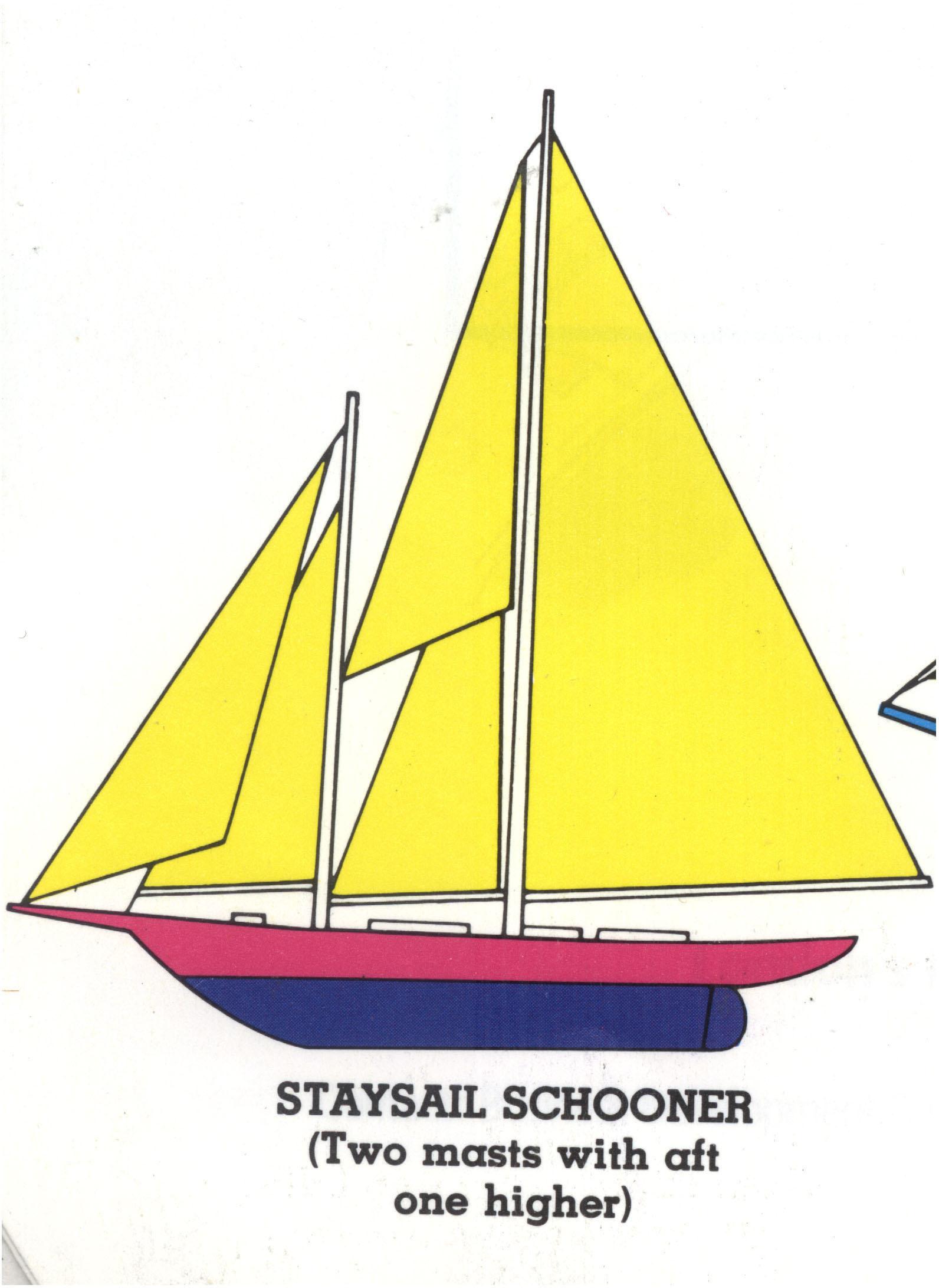
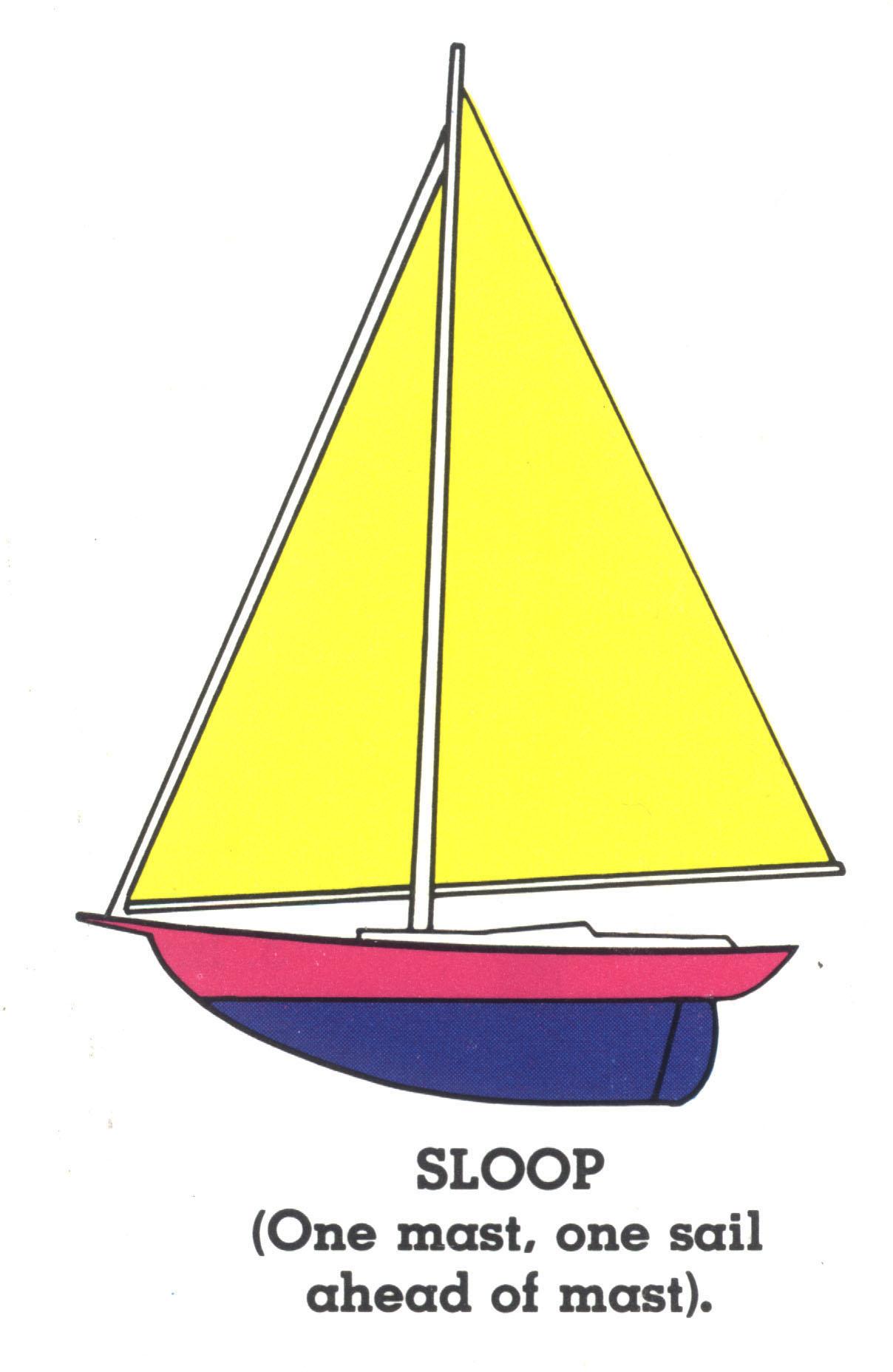
Inventors began experimenting with steam-powered boats in the late 1700’s and by the early 1900’s the steamship had nearly replaced the oceangoing sailing ship. But coal-burning steamships had to depend on coaling depots, and certain trade routes – such as those along the coasts of South America – had few coaling depots. On those routes, sailing ships still had use. For Pic. 17. Modern schooner many years, for example, sailing ships carried nitrate, a fertilizer, from Chile, around the tip of South America, to Europe.
The sailing ships launched during the late 1800’s and early 1900’s were huge vessels built more for strength than speed. They had strong, straight-sided steel hulls and wire rigging. To operate cheaply, they used small crews and, therefore, carried a
P
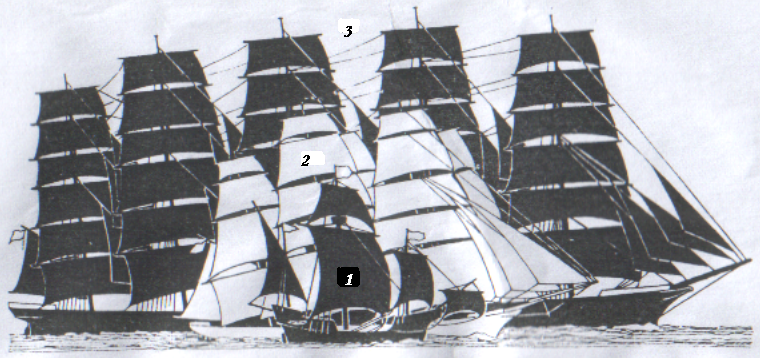
minimum amount of sail. The mightiest of these ships was The Preussen, a five-masted full-rigged German vessel built in 1902. It was the largest sailing ship ever built, measuring 433 ft (132 m) long and 54 ft (16 m) wide. It could carry about 7500 t of cargo.
Since the early 1900’s, the number of seagoing sailing ships has declined steadily. Many have rotted or rusted away at their docks. Today, most of the few remaining square-riggers serve as merchant marines or training ships for cadets in the navies of various countries, like the world-famous Tovarisch, a “film star” of practically all Russian marine adventure movies.
In many developing countries, people still use sailing vessels for coastal and inland shipping and fishing. Many centuries ago, the Chinese developed the junk, a sturdy wooden vessel that carried its sails parallel to the length of the ship. The Chinese still use junks to carry goods and passengers along coasts and on rivers. For hundreds of years, the Arabs have sailed the Red Sea in long, slim, lateen-rigged vessels called dhows. Various Indian versions of the dhow are common in the harbors of Bombay, Calcutta and other port cities of India. Thee people of New Guinea have long used a primitive sailing vessel called a lakatoi, which consists of several dugouts lashed together. Two-masted sailing ships called schooners carry cargo along the eastern and southern shores of the Mediterranean. Schooners and single-masted sloops sail between Panama and Ecuador and along South America’s coast.
Ex. 19. Answer the questions:
1. What changes in sailing shipbuilding took place in the XVIII – XIXth centuries? 2. How long did it take steamboats to replace sailing vessels? 3. What did steamships have to depend on? 4. Where did sailing ships continue to have use? 5. What was the difference between the sailing ships of early 1800’s and those of late 1800’s? 6. What is the largest sailing ship ever built? 7. What has happened to many seagoing sailing ships since the early 1900’s? 8. How are the remaining riggers used today? 9. Where do people still use sailing vessels for coastal and inland shipping and fishing? 10. Can you explain what is junk? Dhow? Lakatoi? 11. Is there any difference between former and present sloops and schooners?
Ex. 20. Explain why:
-
sailing boats still had use on some routes in the XIXth- XXth centuries;
-
new sailing ships had small crews and carried a minimum amount of sail;
-
the number of seagoing sailing ships has declined steadily since the early 1900’s;
-
people continue to use sailing vessels. Give as many reasons as you can.
Ex. 21. Develop the idea:
-
Since the early 1900’s, the number of seagoing sailing ships has declined steadily.
-
The sailing ships of the last period of their wide use were built more for strength than speed.
-
In many developing countries, people still use sailing vessels for coastal and inland shipping and fishing.
Ex. 22. Make up a short summary of the text.
Ex. 23. Revision: Describe the constructional features of some sailing ships of different kinds, using pictures below.
1.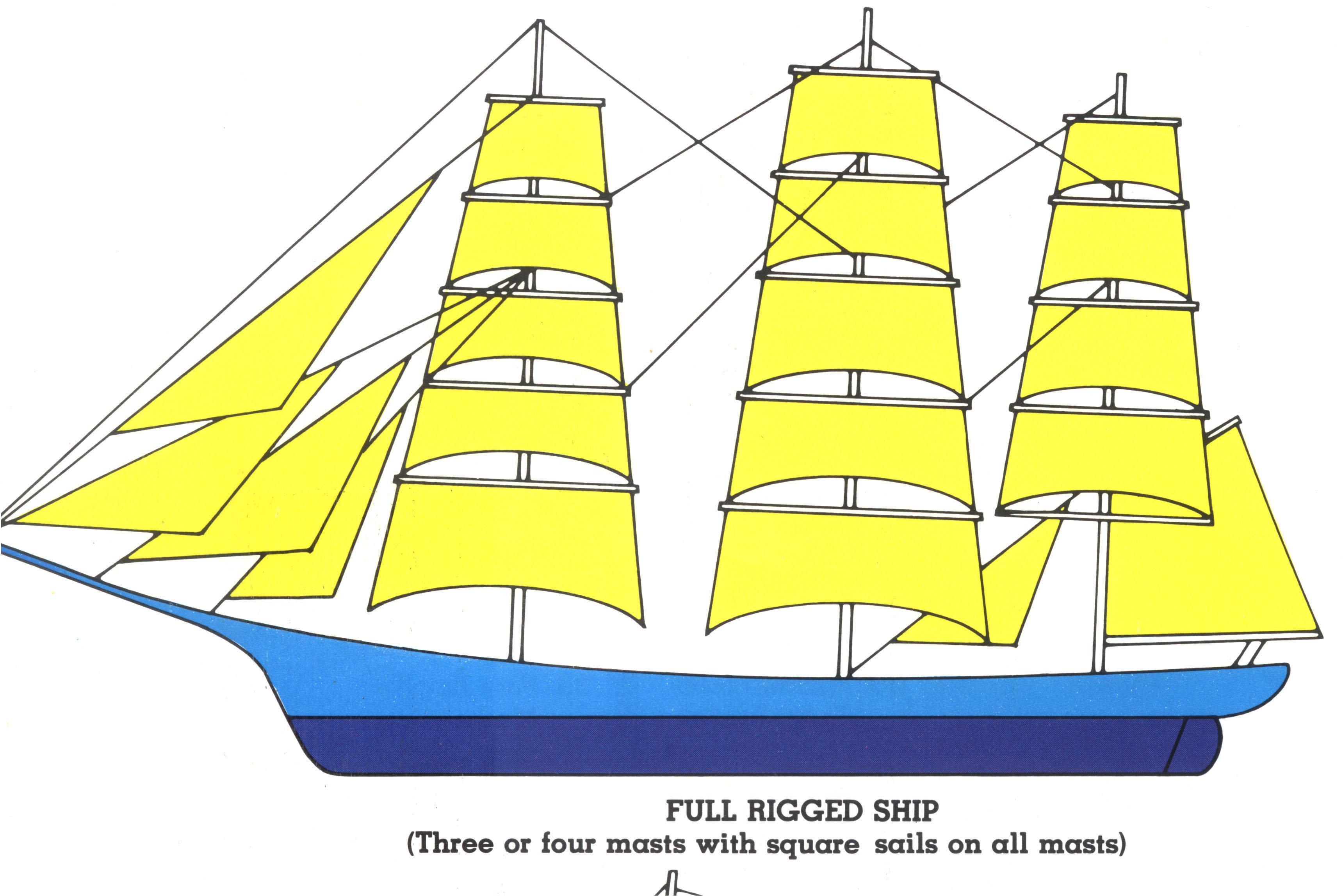 2.
2.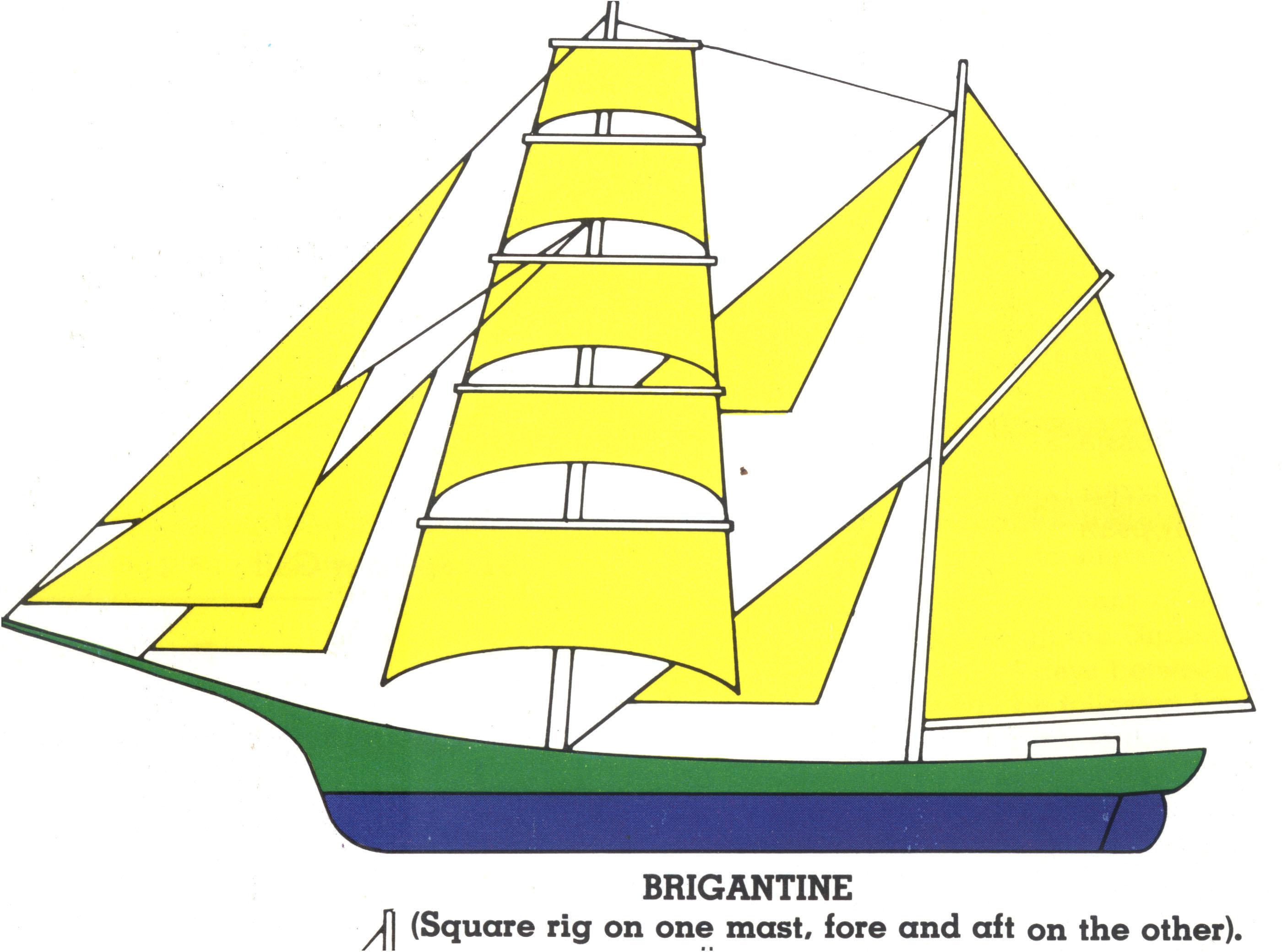
3.
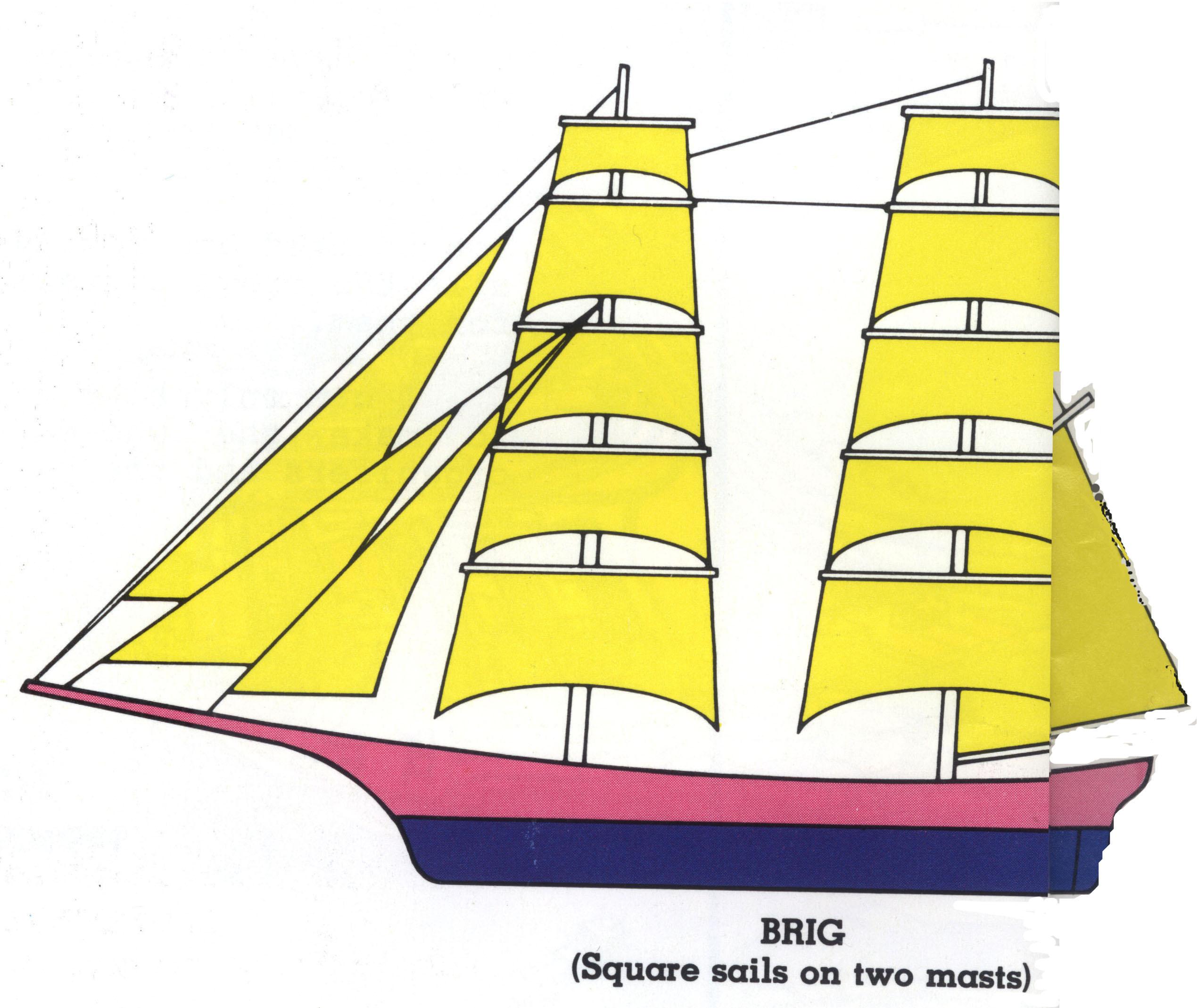 4.
4.
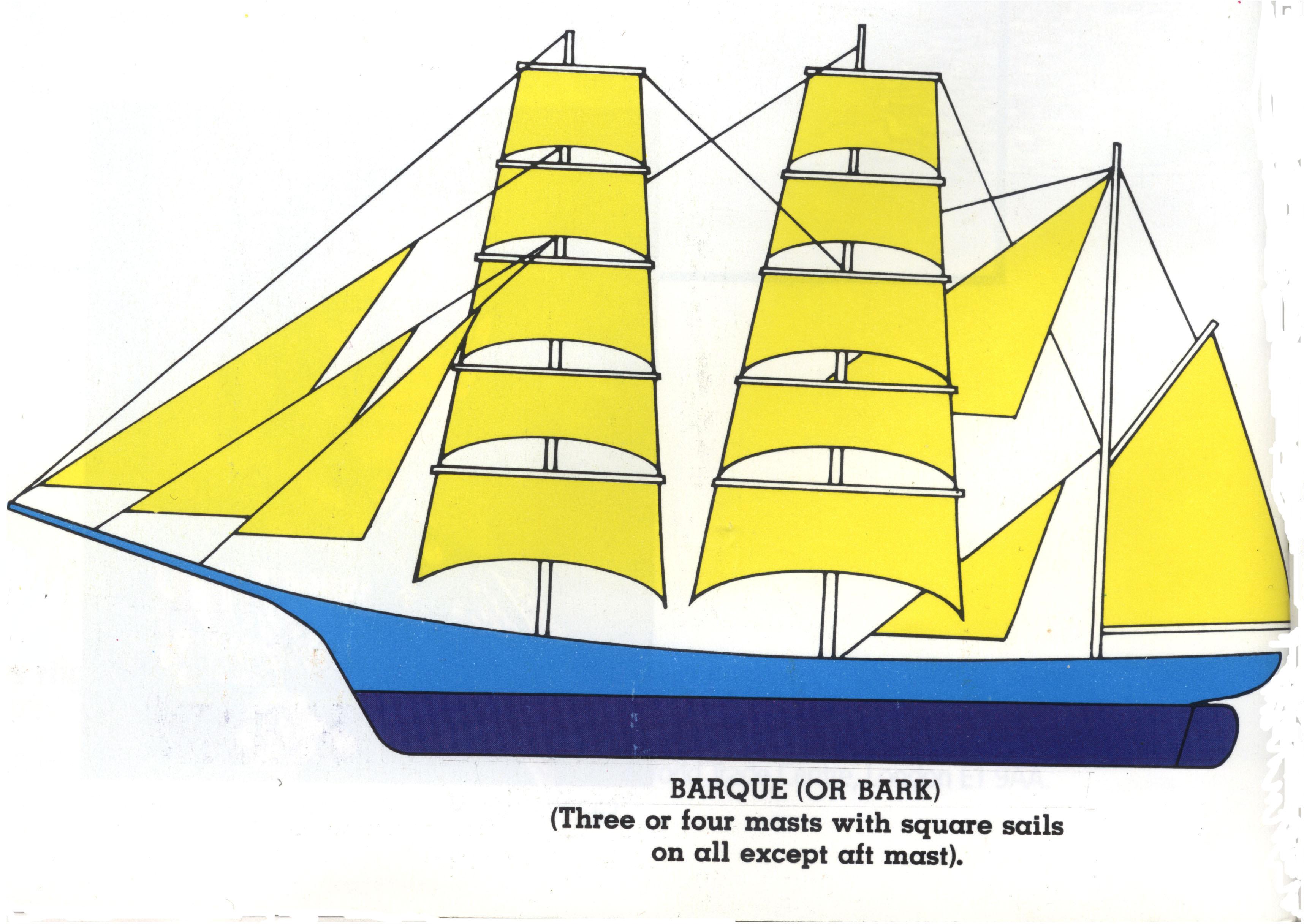
5.
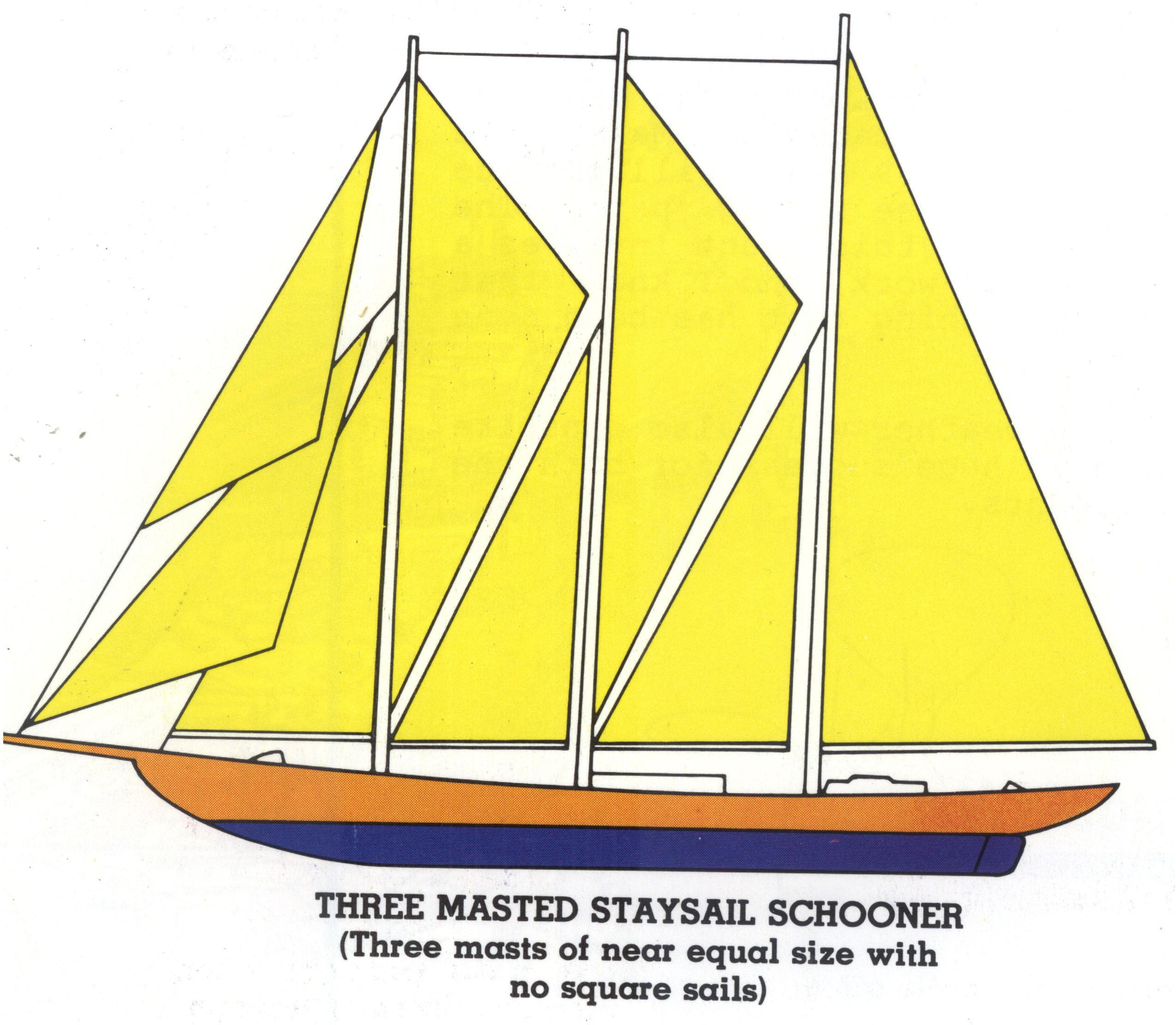 6.
6.
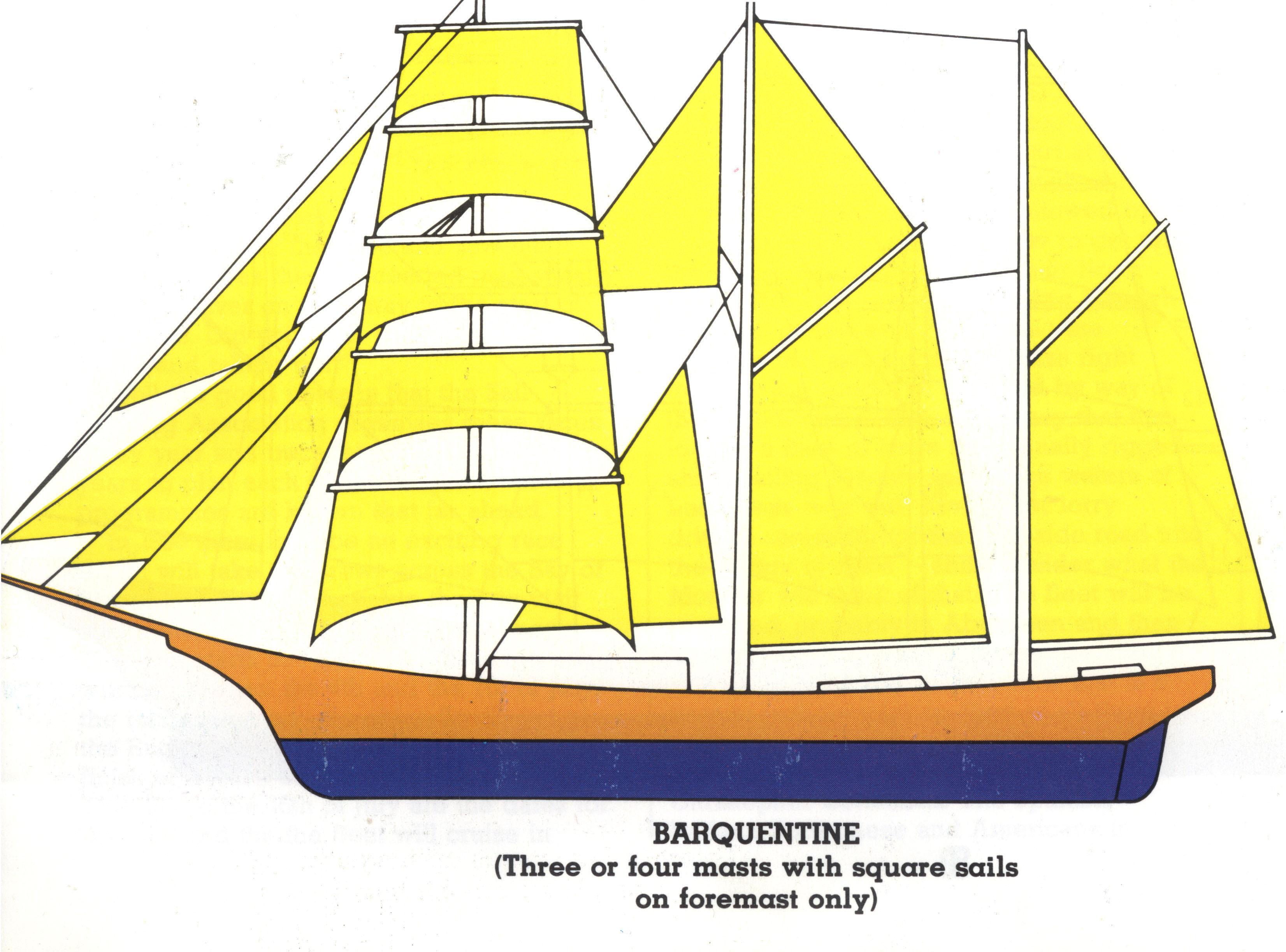
Pic. 19. 1) Frigate; 2) Brigantine; 3) Brig; 4) Barque; 5) Schooner; 6) Barquentine
Ex. 23. Speak on the topic “Full-riggers”
